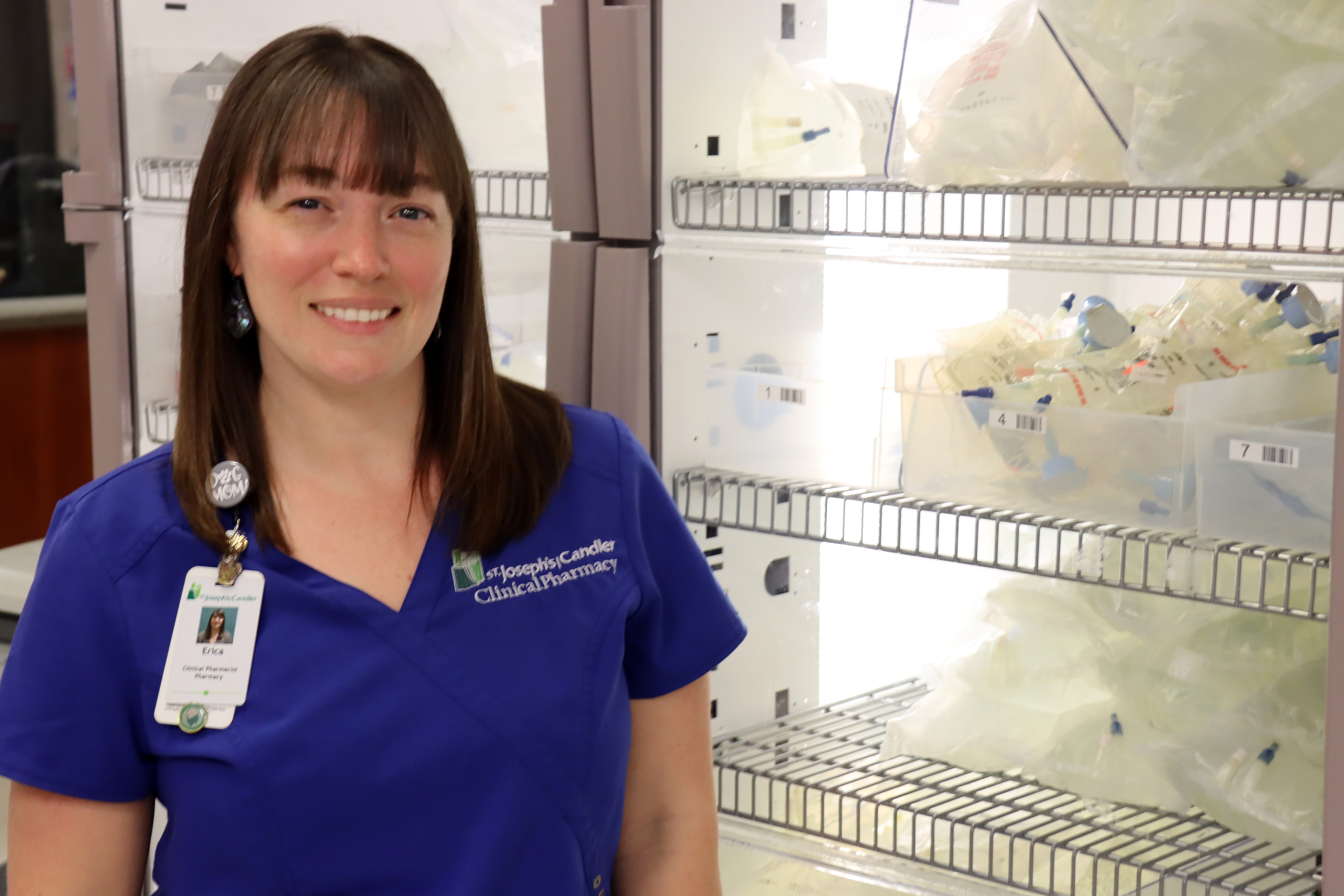What do I do if my child takes my medicine?
Family Health
It’s not uncommon for the St. Joseph’s/Candler emergency departments to treat children who’ve ingested unsolicited medication.
Nicotine Gum. Grandma’s blood pressure medicine. Tylenol.
Fortunately, the cases have been minor and not resulted in serious injury, says Erica Merritt, Clinical Pharmacy Specialist of Emergency Medicine in the Candler Hospital Emergency Department.

Would you know what to do if your child were to get into the medicine cabinet?
If it’s concerning an accidental overdose, one of the best things you can do is call Poison Control.
The number is: 1-800-222-1222.
Write it down. Post it on the refrigerator. Save it in your cell phone.
“The No. 1 thing I would recommend to do is call the Poison Control Center. They are fantastic,” Merritt said. “They will ask all the pertinent questions, and they will give you advice. They can give recommendations as far as it’s all going to be OK or you need to go the emergency department. They will give you great, great recommendations.”
Calls are free, confidential and answered by experts 24 hours a day, seven days a week, 365 days a year. If the Georgia center is swamped, your call immediately will be transferred to the nearest available center.
As you are calling Poison Control, make sure your child is safely away from anything he or she ingested. Also, Merritt recommends never making your child throw up. Vomiting may make the situation worse, she said.
Whether you call Poison Control or visit the emergency room, it’s important to try to know what your child took. If you come to the emergency department, bring any boxes or bottles that may be the source of your child’s ingestion. If health care officials have an idea of what may have been consumed, it will help determine what to monitor, for how long and any antidotes they can give, Merritt said.
Prevention is key
While it’s important to know what to do if a medication overdose or accidental poisoning were to occur, it’s just as vital to try to prevent an accident.
Here are some tips:
- Try to store all medications out of the reach of children. You may want to keep medications and pharmaceuticals in a cabinet with child-resistant locks.
- Keep all medications in their original containers. Also keep in mind that there is no such thing as a 100 percent child-proof lock or container.
- Educate your children about never eating anything without an adult’s approval.
- Show your child the difference between vitamins and medications versus candies.
“Think about your cold and flu and headache medications that come in liquid form or those blister packs that you can pop right out. A lot of them look like candy,” Merritt said. “Kids can get very interested in those. It’s important to think about not only prescription medication but any medication you are keeping in the home. Make sure you are keeping them out of the reach of little hands.”
Merritt also reminds parents to talk to their children about medication safety when at school, daycare or a babysitter’s, friend’s or relative’s house.
For more information, visit the American Association of Poison Control Centers’ website at aapcc.org.
Medication and your pets
Children aren’t the only ones accidentally getting into things they shouldn’t. Pets also are at risk for medication poisoning.
“There are a lot of medications that humans take that pets can actually take too,” Merritt said. “Talking with my pets’ vet, I learned animals have a really high metabolism so animals can tolerate high doses of a lot of medications compared to humans.
“There also are some medications that may be 100 percent safe for us that may be toxic to them, just like a lot of foods are toxic to them.”
If your pet ingest something concerning, call your veterinarian immediately. If it’s after hours, you can call Poison Control. For a nominal fee, a Poison Control representative will ask you any pertinent questions and offer advice regarding your pet’s condition.